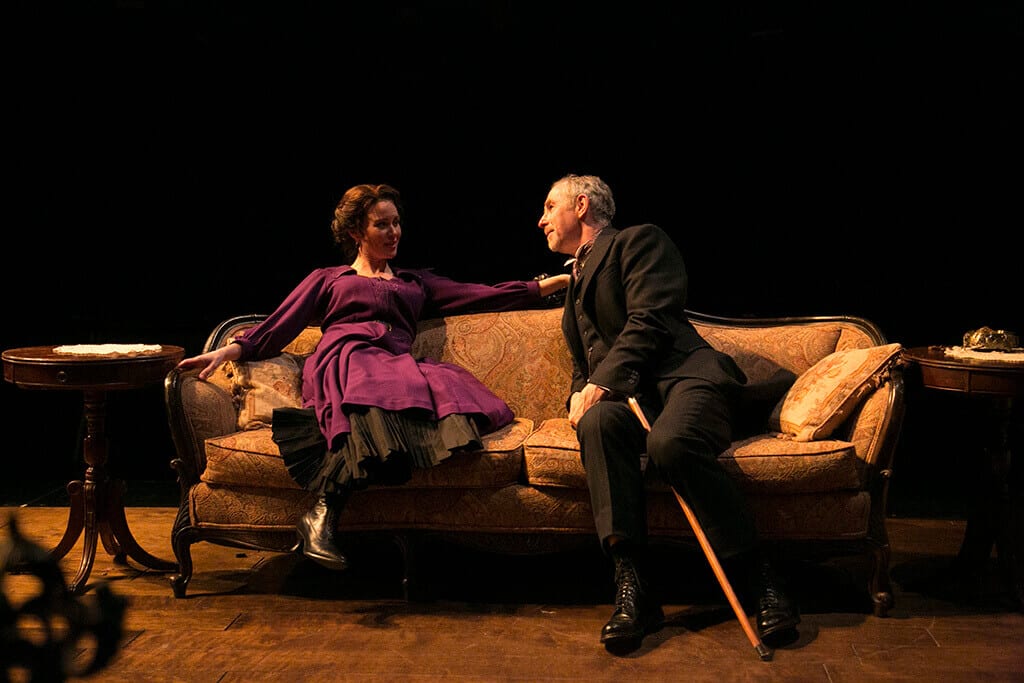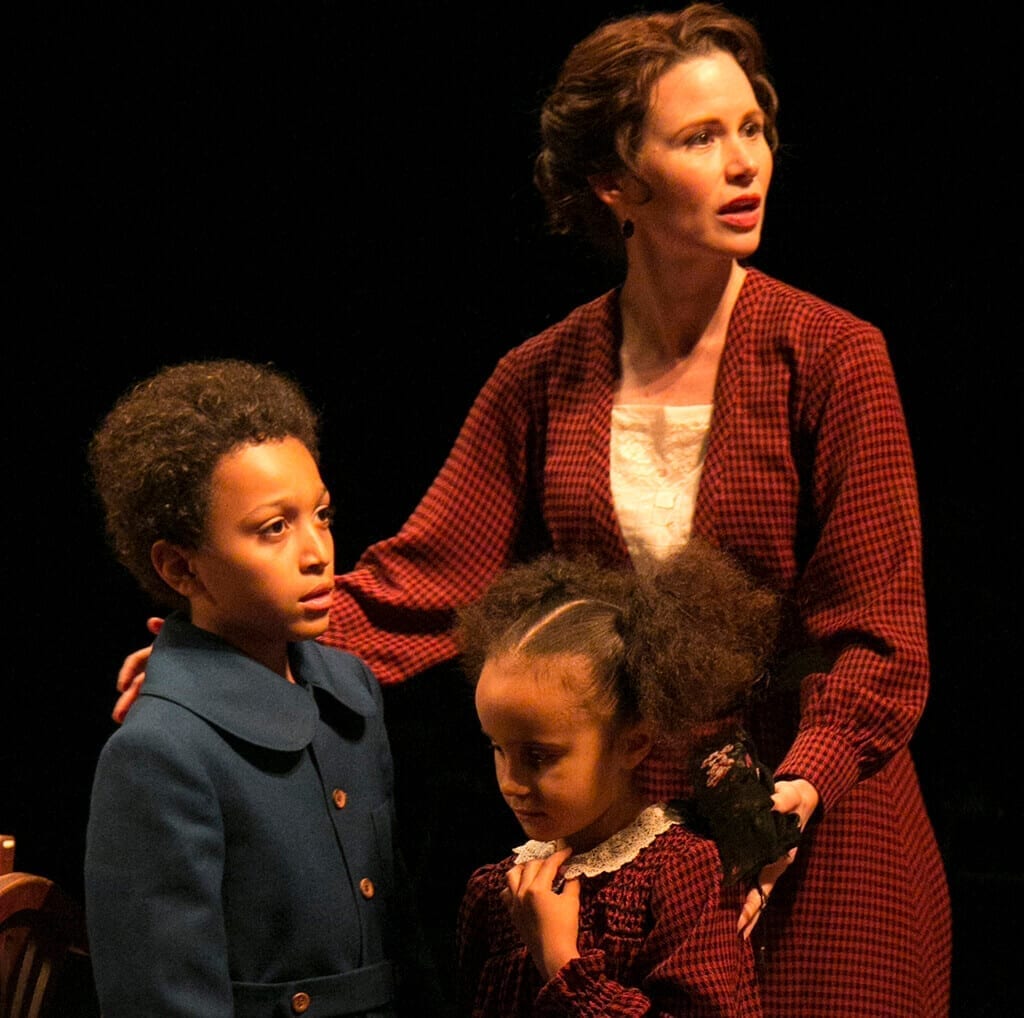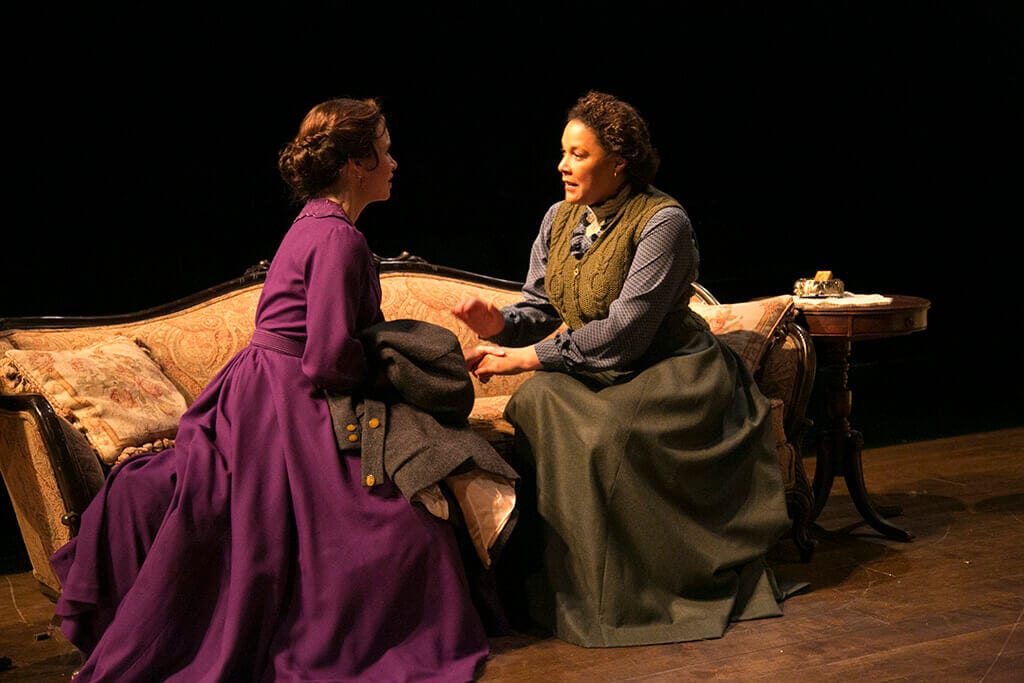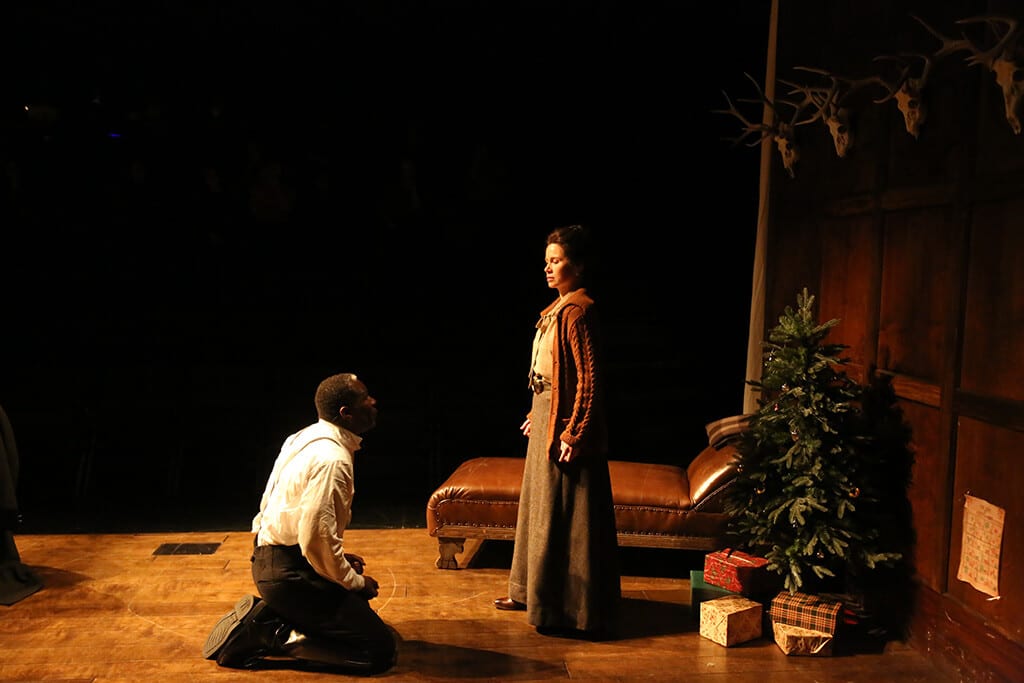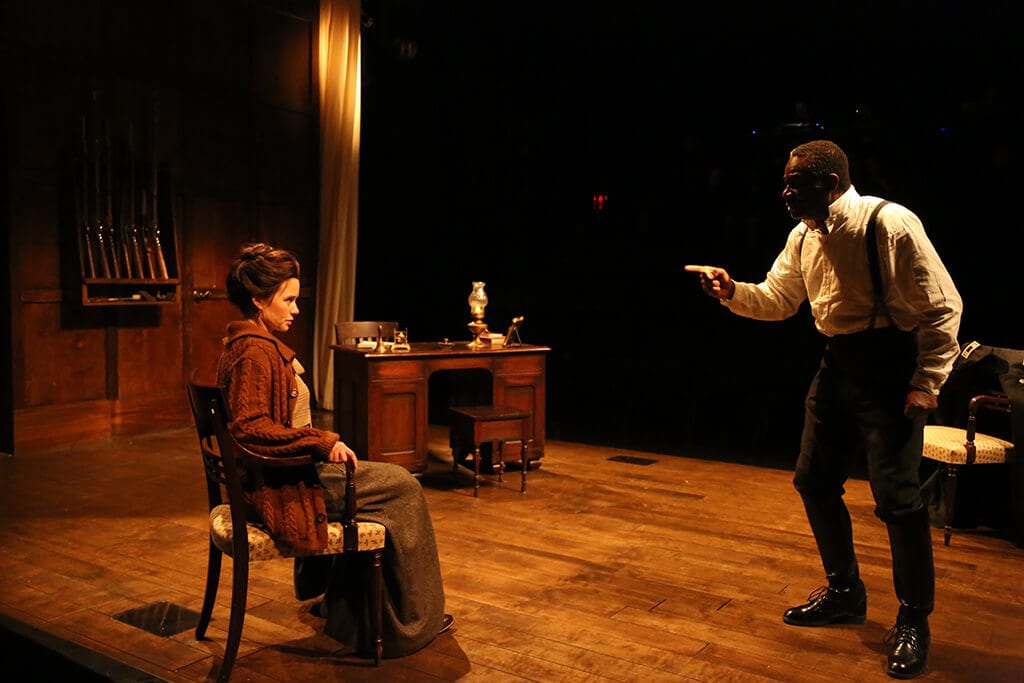These are two separate plays–the famous early modern Scandinavian ones, by Henrik Ibsen and August Strindberg respectively–to which tickets may be bought on different days. But the Theater for A New Audience has joined them together by a common cast and asks us to consider them together as a single offering. Turns out the whole is indeed more than the sum of the parts.
We get two stunningly contrasting pathologies of traditional marriage. In Ibsen’s A Doll’s House, we have coy, infantilized Nora, played by the crystal-clear Maggie Lacey, wheedling and scheming around her mansplaining husband Thorwald. They are two strangers enacting a dance in a life largely performed for others. John Douglas Thompson’s Thorwald is all stuffy respectability, with a springy-legged half crouch that simultaneously suggests readiness for action and due deference to the system at large. When it all comes undone in the end, Nora can barely imagine an honest relationship between the two, and neither can we. Thompson’s intrinsic dignity as an actor though seems to keep him from ever being quite fully stripped bare emotionally, which blunts the power of the ending a bit.
In Strindberg’s The Father, the very same actors appear in a scaldingly frank psychological battle to the death between the sexes. Unlike Ibsen’s proto-feminist case for liberation, Strindberg asserts here that women have always been the stronger. As Laura, Lacey manipulates not coyly but coldly and brazenly, and with devastating success, reducing her husband, the esteemed Captain, to little more than the dependent, frightened child Strindberg imagines women always see men as, on some level. Lacey’s convincing Laura is Nora as an utter adult. And Thompson certainly gets his chance here to release all emotional safety.
Both plays mark religion’s sway yielding to science, including medical science, though there was actually precious little of it to go around at that point. We get doctors in both plays as raisonneur figures, both played ably by the clear-eyed, chipper Nigel Gore, who lends a wry note to the formalities of late nineteenth century speech. And we get major plot turns based on what we would now consider wrong science–in one case the idea that parents’ sinful acts are generally heritable in the form of disease, and in the other that a child’s paternity is never definitively knowable, which of course it wasn’t at the time. It hardly matters–it’s the human relationships that are really under the microscope.
This was my first time in the lovely almost-new Polonsky Shakespeare Center. The steeply raked seating is on both sides of the playing area, front and back if you will. (It should really be called Theatre for Two New Audiences.) This set-up frees the action from the conventions of two-dimensional stage pictures; the actors aren’t forced to “cheat out”. All in all it gives the impression that the lid has been pried off this living room, allowing us to peer in at the action. I like it!
One might assume the “point” TFANA is after in this pairing may have been to do with the non-traditional casting, that is, including African-American actors in roles that aren’t traditionally cast that way. But that particular awareness fades away within about thirty seconds as the drama unfolds. Like other forms of theatrical artifice, such as everyone speaking English rather than Norwegian or Swedish, it’s just not the point. The nearly irresistible gale force of gender roles utterly swamps any hint of consideration of race here.
This is modern domestic drama of the highest caliber, played exceptionally well, and presented in a program that will leave you discussing it for days.


